現在位置
- Yokohama-shi Top Page
- Municipal Government Information
- Public Relations, Public Relations, and Public Relations
- Public Relations and Publications
- Public Relations Printed Materials
- Public information Yokohama
- Public information Yokohama-shi version
- Discover Yokohama Aya
- "Yokohama Aya Discovery" series back number (2023)
Last updated on December 1, 2023.
The text is from here.
"Yokohama Aya Discovery" series back number (2023)
Delivering back issues of "Public Relations Yokohama" serialized on the page

Yokohama with sea, port, greenery, history, region, people and various attractions. "Yokohama Aya Discovery" is a series of colors of this city. Since the January 2023 issue, it has been serialized on the "Public Relations Yokohama" page, and more detailed information has been posted on the website. Here, the past serialization of the paper (2023) is re-posted. In addition, please refer to the link in "More detailed stories" at the bottom right of each month article for the contents of the web.
I came to the December 2023 issue, saw it, bought it! Yokohama Hashidori Shopping Street
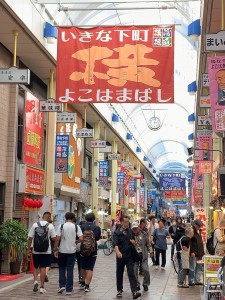
Yokohama Hashidori Shopping Street (get off at Bandobashi Station on the municipal subway, Minami Ward)
Writer Anna Ogino
It's my first time, but I miss the shopping street. Even a single radish looks shiny when placed at the storefront of a greengrocer. If you want efficiency, it will be a supermarket, but if you want to enjoy dialogue with things and conversation with sellers, it will be a shopping street.
I call myself a "buyer." I went around the shopping streets of all wards of Yokohama City, but the starting point is Yokohama Hashidori Shopping Street. The reason that the 350-meter street feels twice as much as that is because the arcade emphasizes a sense of perspective. Is it exaggerated to be like a bazaar in the Middle East?
Yokohama Bridge, which has a history of nearly 100 years since 1928 (Showa 3), began with a business close to a stall for port workers. It's cheap that it doesn't change. There are rumors that professionals come to buy. I grew my hands unintentionally for 100 yen lettuce.
And this city has planning power. Recently, students came from a junior high school in Akita, performed dances, and “sales” specialty products such as Iburigakko. The proceeds were donated to children through UNICEF. Students from Kumamoto Prefecture by the end of the year and Kushiro will also come next year.
It's a big sale. The shopping street is the most shining season. In addition to Yokohama Bridge, there are many talented people in the city. Why don't you go out casually?
Anna Ogino (Oginoan)
Professor Emeritus of Keio University. Born in Yokohama in 1956. Graduated from Keio University. Ph.D. Sorbonne. In 1991, he won the Akutagawa Prize for his carry-on water. Received the Yomiuri Literature Prize in 2001 for "Horabuki Henri's Adventure". In 2008, received the Osamu Ito Literary Prize for Crab and He and Me. His recent work is "The Room of the Old Woman Marianne Suzuki".
[Inquiry] Policy Bureau Public Relations Section Tel: 671-2331 Fax: 661-2351
November 2023 issue Old and New Japanese Culture Wonderland
The inner garden and colored leaves
Nobuko Nakamura, a scholar of Sankeien Hoshokai, a public interest incorporated foundation
What kind of place is Sankeien? If you are asked, you will answer "It's a garden." But that's not enough. On the site area of about five Yokohama Stadium sites, there is a view that the founder said "not private."
The garden was built by Sankei Hara (real name: Tomitaro 1868-1939), a businessman who made a fortune in raw silk trade. In Honmoku, which was inherited from the previous generation, old buildings were relocated from Kyoto and Kamakura, and placed in various places. Planted plants such as plums and irises, arranged mountain streams, and created a beautiful garden in each season. The scenery created by skillfully utilizing the terrain of the valley called "Minoya" can be said to be the sense of Sankei, who is familiar with tea ceremony and art.
Completed about 100 years ago, this garden is a special space where you can enjoy old buildings from the Muromachi period. It is no exaggeration to say that Sankeien Garden, where 10 of the 17 old buildings are designated as Important Cultural Properties and the garden itself is designated as a national scenic spot, is held every day in special exhibition.
Sometimes I go back from the port town and go back in time. The inner garden, which Sankei called "the essence of Sankeien", has a gorgeous season with ginkgo and autumn leaves colored from around November.
[Inquiry] Sankeien Hoshokai Tel: 621-0634 Fax: 621-6343
Access Take a bus from "Yokohama", "Sakuragicho", "Motomachi-Chukagai" stations and get off at "Sankeien Entrance" and walk for 5 minutes. Alternatively, take a bus from "Negishi" station and get off at "Honmaki" and walk 10 minutes. There is also a parking lot (charged).
[Closed days] December 26-31
October, 2023 issue marathon event born with passion of citizen
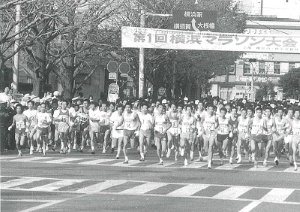
November 1981 (Showa 56) First Tournament
Yokohama Marathon Organizing Committee Secretariat
The Yokohama Marathon starts in Landmark Plaza Shopping Center and runs through tourist attractions in the city and the Metropolitan Expressway. The Yokohama Marathon has now been established as one of the largest citizen marathons in Kanagawa Prefecture, but did you know that this beginning was a signature activity for citizens?
In 1980 (Showa 55), as the citizens' marathon boom spread worldwide, signing activities began with citizens seeking marathons in Yokohama. . Signing activities are not limited to the prefecture, but are called nationwide, and there are a total of 103,741 signatures. In response to this, the first Yokohama Marathon will be held in 1981 (Showa 56).
It started with two events of 10km and 20km, and a half marathon started from the 12th tournament and was held until the 33rd. In response to many voices wishing for a full marathon, the Yokohama Marathon 2015 was newly held in 2015 as the long-awaited full marathon.
The Yokohama Marathon, which was born with such a passion of citizens, will be held on Sunday, October 29 this year. From this tournament, three new events will be established, pair relay, fan run (family), and fan run (junior high school students), and various water supply performances will be planned at the water station, not only runners but also more people It is a tournament that you can enjoy. If you are near you, please support the runners along the road.
Do you not rediscover charm of Yokohama and sports through Yokohama marathon?
[Inquiry] Yokohama Marathon Organizing Committee Secretariat Tel: 651-0666 Fax: 226-5037
September 2023 Great Kanto Earthquake: Disaster Experience of Yokohama Citizens―

Situation at the time of the earthquake drawn by Jiro Hachi Kiguma (collected by Yokohama Archives of History)
Ritsuto Yoshida, Chief Researcher, Museum of Yokohama Urban History
On September 1, 1923, the Taisho Kanto Earthquake of magnitude 7.9 occurred in Kanagawa Prefecture. The city of Yokohama was hit by severe shaking, many buildings were destroyed in the center of the city, and fires from 289 locations spread rapidly due to strong winds. Considering that the estimated number of casualties in Yokohama City was 26,623, and the population at that time was about 440,000, about one in 17 died. The citizens of Yokohama who survived the great disaster remained in their diary, memoirs, sketches, etc.
Jiro Yachigima (Aya Kasumi), a teacher at the former town elementary school in Naka Ward, is one of them. At 11:58 am, Kuma Jiro, who encountered an earthquake at a barber shop in Motomachi 5-chome, wrote in the Great Kanto Earthquake Diary on September 1, 1923, "I thought that the sound of a distant lightning had sounded. "And wrote the situation at the time of the earthquake, as well as in a sketchbook. Jiro Kuma stood the shaking, grabbing Kamoi and the pillar with both hands, but couldn't stand it and jumped out of the back door. Immediately after that, the barber shop will be destroyed. And what plunged into Kuma Jiro's eyes was the destroyed Motomachi and the wounded survivors.
The special exhibition, which is currently being held, reproduces the Great Kanto Earthquake of Yokohama from records left by citizens. We hope that you will be able to widely know the state of the catastrophe that hit Yokohama 100 years ago and raise your awareness of disaster prevention.
special exhibition, "Through the 100th Great Kanto Earthquake of great disaster: Experience the Disasters of Yokohama Citizens."
Held at Yokohama Archives of History (2-minute walk from Nihon Odori Avenue Station in Minato Mirai Line) until Sunday, December 3, 2023 (charged).
[Inquiry] Yokohama Archives of History Tel: 201-2100 Fax: 201-2102
August 2023 Issue “Night ZOORASIA” where you can enjoy the night zoo.

Night ZOORASIA last year
Yoshiyo Ueda, in charge of attracting customers at Yokohama Zoo ZOORASIA
Yokohama Zoo ZOORASIA was built in a corner of the Miho and Shinji districts, one of the seven major green centers established by the city of Yokohama to carry out green conservation, and opened in April 1999. At the "Nature Experience Forest" in the park, you can still enjoy the seasonal flowers and wild birds. There are also Nogeyama Zoo and Kanazawa Zoo in Yokohama, and having three zoos in the city is rare in Japan.
The Night ZOORASIA, which has been held since 2001, is a popular summer event. The park usually closes at 16:30, but on Saturdays, Sundays and public holidays in August, the opening hours will be extended to 20:30. For this reason, you can see the animals at night that you cannot usually see, such as the active appearance of nocturnal animals and the sleeping of day-time animals. At the same time, you will be able to know the detailed ecology of animals through guides by breeders and night bird shows. In addition, the ZOORASIA Night Festa will be held to illuminate the nature-rich park with illuminations and enjoy a variety of gourmet foods and concerts. Why don't you spend a night full of stomach and memories in ZOORASIA this summer?
※"Night ZOORASIA" is scheduled to be held on Saturday and Sunday in August and August 11 (Friday).
[Inquiry] Yokohama Zoo ZOORASIA Tel: 959-1000 Fax: 951-0777
Access Get off at Tsurugamine / Mitsukyo Station on the Sotetsu Line, or at Nakayama Station on the JR Yokohama Line or Municipal Subway Line. Transfer to a bus at each station. Get off at "Yokohama Zoo" and walk 1 minute. ※There is a toll parking lot
[Closed] Every Tuesday (in the case of holidays and holidays, the next weekday), New Year's holidays ※There is a temporary opening.
July 2023 Issue Let's experience the sea of Yokohama at Marine Park
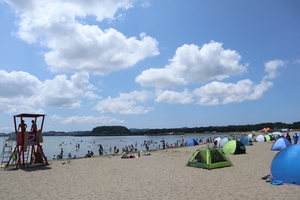
The sandy beach of Marine Park, which is about 1 km long
Mr. Hitoshi Miyaguchi, Director of Marine Park
As the name suggests, Yokohama has a long coastline on the east side, and in the early Showa era, beaches lined up in Honmoku, Isoko and Kanazawa, and there were many places where you could enjoy the sea, such as playing in the water and clam digging. However, natural beaches have been lost due to coastal landfills during the period of high economic growth. After that, in order to restore the beach of Yokohama, which was popular with citizens, it was maintained along with Hakkeijima in line with the landfill project in the Kanazawa district, and opened in 1988 as the city's only beach park with "Marine Park". " The scenery of the white sand and blue pine, which was one of the scenic spot's eight scenic spots in Kanazawa, depicted in Hiroshige Ando's ukiyo-e, makes you feel somewhat nostalgic and cozy.
At Marine Park, which is shallow and has quiet waves, you can experience not only swimming but also various ways to enjoy the sea. From spring to summer, you can enjoy a full-fledged barbecue throughout the year in clam digging, where you can collect clams and other shellfish that are naturally breeding, as well as barbecue areas (except in winter) and oysters and scallops from Sanriku. Windsurfing and SUP ※Marine sports such as beach volleyball and beach soccer, beach sports such as jogging, basketball, and soccer are also great attractions to be able to promote sports and health in the sea breeze.
The marine environment, such as the issue of marine litter, is closely linked to our lives and the future. Please come to Marine Park where you can experience the rich and beautiful sea of Yokohama up close.
※An abbreviation of Stand Up Paddleboard, a sport that stands on a large board (plate), rows paddles, and travels on the surface of the water.
[Inquiry] Marine Park Management Center Tel: 701-3450 Fax: 701-3334
Access Transfer to the seaside line at Shinsugita Station on the JR Line and Kanazawa Hakkei Station on the Keihinkyuko Line Line. Get off at "Uminokoen Minamiguchi" station, "Uminokoen Shibaguchi" station, "Hakkeijima" station, 2-minute walk. ※There is a toll parking lot
June 2023 issue <New video program release> Let's get acquainted with Yokohama Port at Yokohama Minato Museum!
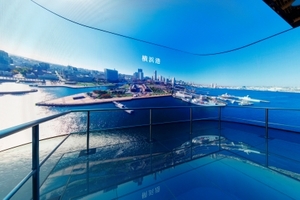
VR theater "Yokohama Cronicle" (image)
Michiko Shimamune, Deputy Director of Arts and Sciences, Yokohama Minato Museum
The Yokohama Minato Museum introduces the history and role of Yokohama Port from the opening of the port to the present day with abundant materials, photographs, models, etc. Approximately half of the permanent gallery space was renewed during FY2021 during the COVID-19 pandemic and reopened on June 28, 2022. Introduced a large-scale high-definition video display, a permanent exhibition on the theme of the technology and history of landfill and port construction in Japan, and hands-on exhibitions such as simulators and touch walls, making it an exhibition that both children and adults can enjoy and get close to Yokohama Port. Was.
In addition, from the opening of Yokohama Port on June 2 this year, new programs will be released at the popular VR (virtual reality) theater "Minato Capsule" and a large video exhibition showing along with a model of the Perry fleet.
"Yokohama Cronicle-SINCE 1854-" will be screened at the VR theater. Introducing the transition of Yokohama Port, which began with the opening of the port, with a lively video. You can also enjoy dynamic images of Yokohama Port from a viewpoint that you cannot usually see, such as the recent cruise ship, the construction of the Shin Honmoku Wharf that began in 2020, and images of gantry crane operations. In addition, in the large-scale video exhibition, a new program “Yokohama Port Opening-Wave of Events” will be released. This section introduces the history from the arrival of Kurofune to the opening of Yokohama with a large screen measuring 4 meters long and 8 meters wide.
We look forward to your visit.
[Inquiry] Yokohama Minato Museum Tel: 221-0280 Fax: 221-0277
Access Get off at Sakuragicho Station on the JR Negishi Line Municipal Subway Blue Line, Minatomirai Station on Minato Mirai Line and Basyamichi Station on the 5-minute walk.
[Closed] Monday (in the case of holidays and holidays, the next weekday), New Year's holidays ※Temporary closed days ※Paid
May 2023 issue The world's best planetarium completed in Yokohama!
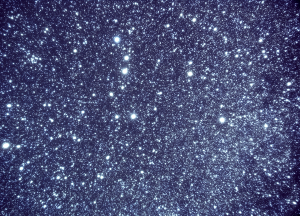
Starry sky projected in the planetarium
Commentator at the Planetarium at Hamagin Children's Space Science Museum Kazu
This year marks the 100th anniversary of the invention of the world's first planetarium projector in Germany. It is said that the world's first planetarium reflected 4,500 stars seen from Germany and was cheered by the world.
In December 2022, the Hamagin Children's Space Science Museum (Yokohama Children's Science Museum) in Yokodai, Isogo-ku renewed the planetarium for the first time in 21 years. One of the most outstanding planetariums is the ability to project stars based on the latest data observed by the space telescope, and GIGAMASK, which is located inside the planetarium, has about 1.2 billion holes representing stars. The size of the darkest star hole is less than 1/5,000th of 1mm, and the gap between stars is only about 1 micrometer, 1/1000th of 1mm.
The planetarium MEGASTAR-IIA was developed and manufactured by Ohira Giken Co., Ltd. in Tsuzuki Ward . "Maybe the MEGASTAR-IIA in Yokohama is the best in the world?" In November 2022, before the opening, the Science Museum decided to challenge the Guinness World Record TM of the number of stars that can be projected in the planetarium.
However, it is not easy to challenge the world record. In February 2023, three months later, the astronomers verified the detailed images taken at the planetarium, and the final results of how many stars could be projected can be obtained. The number is at least 700 million. The Guinness World Record TM is a new record that is five times more than the previous record. ※It's a coincidence.
Adults and children all come and experience the world's best starry sky and universe!
※The largest number of stars projected by the planetarium projector (one-off)
Most stars projected by a planetarium projector (one off)
Date of certification: Wednesday, February 8, 2023 YOKOHAMA SCIENCE CENTER
[Inquiry] Hamagin Children's Space Science Museum Tel: 832-1166 Fax: 832-1161
Access Get off at Yokodai Station on the JR Keihin Tohoku, Negishi Line, 3-minute walk.
[Closed] 1st and 3rd Tuesday, New Year's holiday ※Temporary closed days ※Paid
April 2023 issue Western-style building in Yamate
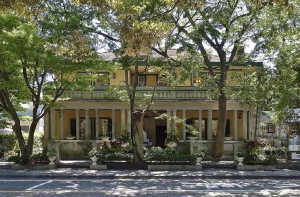
Yamate 234 Ban-Kan, where concerts by phonographs are also held
Located on a hill about 10 to 40 meters above sea level, Yamate is located on a steep cliff when viewed from the sea, so at the beginning of the port, The Bluff was opened by foreigners. ※It was called "Share." Initially, the only foreign settlements set up at the opening of Yokohama were Yamashita settlements, which are currently located in Yamashita-cho, Naka-ku, but Yamate was also a foreign settlement in 1867 (Keio 3) to respond to the increasing number of foreigners. It was done. Yamate Reservation on a lush hill has developed mainly as a residential area.
In the Meiji 10s, when housing for foreigners who do business in Japan began to build, and foreign employees began to play an active role, full-fledged Western-style architecture became the mainstream, incorporating architectural styles from the country of origin such as Germany, France, Britain, and the United States. A Western-style building was built. In addition, churches, theaters, parks, hospitals, schools, and other essential facilities for daily life have been set up, creating a Western-style cityscape. However, peaceful days change completely due to the Great Kanto Earthquake that occurred in 1923 (Daisho 12). Yamate also suffered devastating damage, most of the Western-style buildings collapsed, and many foreigners who lost their homes moved to Kobe, Nagasaki, Shanghai, etc. For this reason, many Western-style buildings that still remain in Yamate were built after the Great Kanto Earthquake.
One of them, Yamate 234 Ban-Kan, was an apartment house for foreigners built around 1927 (Showa 2). It was built on the current site as one of the earthquake disaster reconstruction projects in order to have foreigners who have left Yokohama return after the earthquake. After being used as an apartment until the 1950s, it has been open to the public since 1999.
In the Yamate area, there are also Western-style buildings built from the Meiji era to the early Showa era, and the seven buildings owned by the city are open to the public for free (closed days). When you enter the building through a garden colored with seasonal flowers, furniture and furniture from the past will be provided in a large room equipped with fireplaces and sunrooms, allowing you to survive the lifestyle of foreigners. Why don't you spend a calm spring day in the exotic city of Yamate?
※Bluff: "Cliffs", "Cliffs", "Cliffs", "Cliffs", etc.
[Inquiry] Yokohama Yamate Nishi Western-style building Berrick Hall Tel Fax: 663-5685
March 2023 issue Roses and the History of Yokohama

"Hamamirai", a large and fragrant variety of bright salmon pink
It was in 1989 (Heisei) that roses were enacted as flowers of the city. It was a milestone year, with the era changed from Showa to Heisei, and the Yokohama Expo was held in Minato Mirai 21 district.
The connection between Yokohama and roses was old, and Western roses were brought in by traders who came with the opening of Yokohama Port, and were in full bloom in settlements and gardens of foreign houses. Since then, roses have been planted in Japanese homes through in and out gardeners and merchants, and new species have become popular, and it is said that they spread to the general public in the Taisho era.
Many donation and relief supplies were delivered from the United States to Yokohama, which was devastated by the Great Kanto Earthquake of 1923. As a thank you, Yokohama City gave cherry seedlings and stone lanterns to Seattle City, and from 1930 to 31 (Showa 5-6), about 200 kinds of rose seedlings and 3,000 rose seedlings were delivered from Seattle City as a sign of friendship between the United States and Japan. The city planted seedlings in Nogeyama Park, Yamashita Park, etc., and the number of seedlings increased mainly by enthusiasts. On the anniversary of the opening of the port in 1932 (Showa 7), breeding seedlings began to be distributed to citizens. The initial price was 20 yen for large seedlings and 5 yen for small seedlings, which was cheaper than commercially available seedlings, and was called "Rose of Goodwill in Japan and the United States" and gained great popularity. The opening anniversary of the port is also called the "Rose Festival", and events such as rose exhibitions, rose marches, and rose hymns were also held.
After the war, at the Japan Trade Expo in 1949 (Showa 24), a "rose exhibition" was held, and varieties called pieces imported by air from San Francisco were exhibited. In 1951 (Showa 26), the distribution of rose artificial flower "Aiichi no Hana", which had been held before the war, revived, and the proceeds sold on the streets were used for the expenses of the Minato Festival.
During the period of high economic growth, the rose event was down, but there was also a civil movement calling for the establishment of roses as a city flower. The city held a civic vote in 1989 (Heisei), the 130th anniversary of the opening of the port and the 100th anniversary of the municipal organization, and roses that obtained the most votes were selected as flowers of the city. Yokohama, which has been running through turbulent times such as the earthquake, war damage, post-war requisition and rapid population increase, has been colored with beautiful rose flowers throughout the city.
[Inquiry] Civic Affairs Bureau Regional Activities Promotion Division Tel: 671-3624 Fax: 664-0734
February 2023 issue of Yokohama during the late Tokugawa shogunate period, a tour of the scenery of Japan from old photographs.
Yoji Okayama's storehouse overlooking Nojima (far left) from Kurantei in eight scenic views of Kanazawa
With the spread of smartphones, photography has become one of the casual communication tools. The photos were brought to Yokohama, where the foreign settlement was located, and overseas photographers took pictures of Yokohama's scenery, and travelers from all over Japan took portrait photos at a photo studio in Yokohama. Yokohama is one of the birthplaces of photography in Japan.
The year before the Meiji Restoration (1868 and 1868), there was a photographer who came to Japan. I'm an American named Charles Leander Weed, 1824-1903. Weed brought a large camera called the "Mammoth Plate" and traveled around Japan in the last year of the Edo period (1867, 1867). However, the work rarely remained in Japan, and his name was forgotten. However, 31 photos of Weed were found two years ago (2021).
The old photographs printed in large size clearly recorded landscapes of all over Japan, such as Yokohama, Kanazawa Hakkei, Kamakura, Edo, and Nagasaki. The photos taken from Yamate in Yokohama show the "half-Western style" cityscape built by Japanese carpenters. On the other hand, in the photo of the eight views of Kanazawa, the beautiful sight woven by the sea and the cape was vividly burned.
In this exhibition, in addition to photographs taken by Weed owned by Mr. Okayama, which will be unveiled for the first time, the works of Weed kept by the museum and domestic institutions will be exhibited to bring back the scenery of Japan in late Tokugawa shogunate, which has never been introduced before. Why don't you think about old Yokohama and Japan from old photos?
special exhibition "Phantom Photographer Charles Weed - Unknown late Tokugawa shogunate Japanese Landscape"
Held at Yokohama Archives of History (a 2-minute walk from Nihon Odori Avenue Station in Minato Mirai Line) until Sunday, March 12, 2023 (charged).
[Inquiry] Yokohama Archives of History Tel: 201-2100 Fax: 201-2102
January 2023 issue of the introduction of metal print and the beginning of information dissemination
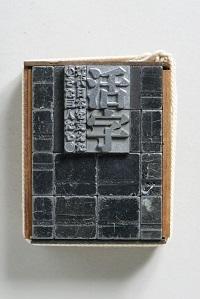
Editing with the title of the exhibition in print (inverting the version image)
Yasuko Ishizaki, curator of the Yokohama City Museum of History
The characters used on PCs and smartphones are digitized typefaces (digital fonts). There are various typefaces in digital fonts, one of which is the typeface called Ming Dynasty.
The Ming Dynasty was a typeface made for woodcut printing in the early days of the Ming Dynasty and Ch'ing (14th to 17th centuries) of China. As printing technology evolved from printing to printing, printing began to be made of metal.
Surprisingly, it was in Western Europe, where Oriental studies became popular, and it was transmitted to China along with the Christian era of Asia. The technology was introduced from Shanghai to Nagasaki in 1869, and then to Yokohama the following year. With the use of typographic printing, the number of characters printed and the number of copies, and the increased amount of information transmitted by printed materials, Yokohama began its journey as a major information transmission base in Japan.
The current exhibition traces the birth of typographical print and Ming Dynasty print, the introduction of print and printing techniques to Japan, and the history of subsequent development. Why don't you touch the origins of the current character culture surrounded by digital fonts?
Special exhibition "Small Giants Supporting Modern Type Japan"
Held at the Yokohama City History Museum (5-minute walk from the Municipal Subway Centerkita Station) until Sunday, February 26, 2023 (charged).
[Inquiry] Yokohama City Museum of History Tel: 912-7777 Fax: 912-7781
Inquiries to this page
Public Relations Section, Policy Administration Bureau City Promotion Promotion Office
Phone: 045-671-2331
Phone: 045-671-2331
Fax: 045-661-2351
E-Mail address ss-koho@city.yokohama.lg.jp
Page ID: 630-017-709







